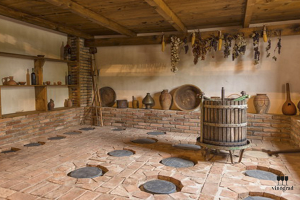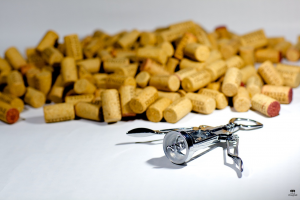KAHETIN TECHNOLOGY
 The sun blinds the eyes, the heady aroma of wine reigns in the air, and in the cordiality you just want to dissolve. Yes, this is colorful Georgia.
The sun blinds the eyes, the heady aroma of wine reigns in the air, and in the cordiality you just want to dissolve. Yes, this is colorful Georgia.
Kakhetian wine making technology
KAHETIN WINE PREPARATION TECHNOLOGY
This country is famous for its rich history, the beauty of nature and, of course, wine. Imagine Georgia without wine is simply impossible, and winemaking without Georgia too. It seems that it was always made here. And this is practically true.
The history of Georgian winemaking is not in the tens or even hundreds of years. For eight thousand years, unique wine has been made here. Georgian wines are unique in everything: character, taste, which is difficult to confuse with wine from other countries, mode of production. Today, like many centuries ago, Georgians use kvevri (clay vessels) for wine production. The use of this technology is not only a tribute to the traditions or an attempt to “distinguish”, the wine from kvevri has an absolutely amazing dry taste and a high content of tannins.
Traditional or Kakhetian technology is based on two basic rules.
The first is a special fermentation. The wort and pulp (peel of berries, bones, combs) are folded in kvevri and tightly closed with a lid, additionally “sealing” with clay. The process of fermenting the must must take place in Kvevri, which was buried in the ground of the cellar (Marani). The earth that envelops the vessel provides temperature stability.
The second is the pulp, or rather the contact with it. The pulp or chacha, as it is called in Georgia, gives the structure of the finished wine full body, aroma and rich taste.
Kakhetian wine making technology
Georgians call pulp also mum for wort, because it is she who “makes” the taste and color of wine. Winemakers believe that in order to get a harmonious drink, the childhood of wine should be happy, i.e. held with mom.
The use of pulp eliminates the need to filter the resulting wine: after the fermentation process is complete, chacha sinks to the bottom of kvevri, forming a dense layer that holds all the “extra”. The influence of man on the course of “production” is minimal, nature will do everything on its own.
By taste this drink has no analogues in the world. The high acidity and richness of tannins make it possible to combine wine with various meat dishes and light snacks.
The use of traditional technology to create wine does not speak about the identity of taste. For example, in Imereti and Kartli, winemakers do not use the crests of grapes in the aging process, which allows them to produce wines with a milder taste. Differences are achieved through the use of autochthonous grape varieties, of which there are about 500 in Georgia.
If the wine was made using the traditional Kakhetian method, then this will be indicated on the label (the word “Qvevri”, “Kakhetian dry” or the image of kvevri).
Timur Tuleubaev. Wine enthusiast
For a long time living in San Francisco – next to the Napa Valley, it was impossible not to get carried away with wine. For Timur Tuleubaev, the stars were formed in such a way that the passion just grew into professional interest. The diploma of the International Culinary Center in California was followed by training at the WSET School in London and working in the wine industry at home in Kazakhstan.




